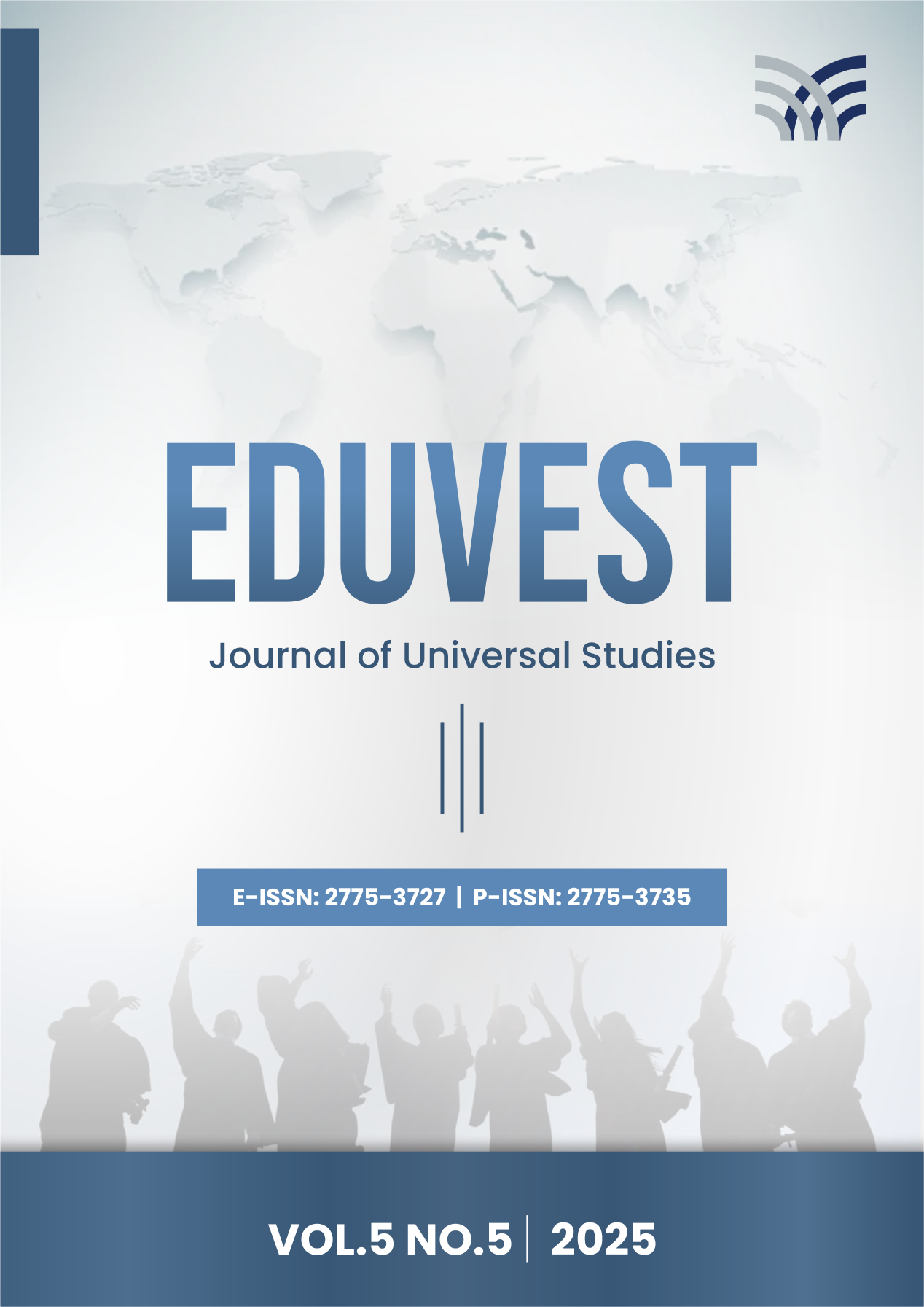The Effect of Work-Life Balance on Mental Health with Job Satisfaction as a Mediator Variable in Employees PT. XYZ (Energy Sector)
DOI:
https://doi.org/10.59188/eduvest.v5i5.51228Keywords:
work-life balance, job satisfaction, mental health, mediation, human resource managementAbstract
Work-life balance is increasingly recognized as a strategic component in human resource management, particularly in high-pressure industries such as oil and gas. This study aims to examine the influence of work-life balance on employee mental health, with job satisfaction acting as a mediating variable. The research was conducted among permanent employees of PT. XYZ, who work under rotational schedules and face intensive operational demands. Utilizing a quantitative approach and survey method, data were collected from 100 respondents using standardized instruments: the Work-Life Balance Scale, the Job Satisfaction Survey , the Mental Health Inventory-38 (Veit & Ware, 1983). The data were analyzed using PROCESS Macro Model 4 with bootstrapping procedures. The findings indicate that work-life balance significantly affects mental health, both directly and indirectly through job satisfaction. Job satisfaction is found to be a significant mediator that amplifies the positive effect of work-life balance on psychological stability. These results reinforce the theoretical perspectives of the Job Demands–Resources model and the Broaden-and-Build Theory, highlighting the affective buffering role of job satisfaction in mitigating psychosocial stress. The mediation model accounts for 56.2% of the variance in employee mental health. Practically, this study provides a foundation for organizations to develop work policies that are not only flexible but also attentive to employees’ affective needs. Emphasizing job satisfaction as a mediation pathway opens opportunities for strategic interventions through job design, emotional support systems, and psychological empowerment in the workplace. This research contributes to data-driven human resource policies aimed at creating healthy and sustainable work environments.
Downloads
Published
How to Cite
Issue
Section
License
Copyright (c) 2025 Wahyu Dodi Tri Marianggodo, Laura Lahindah

This work is licensed under a Creative Commons Attribution-ShareAlike 4.0 International License.











